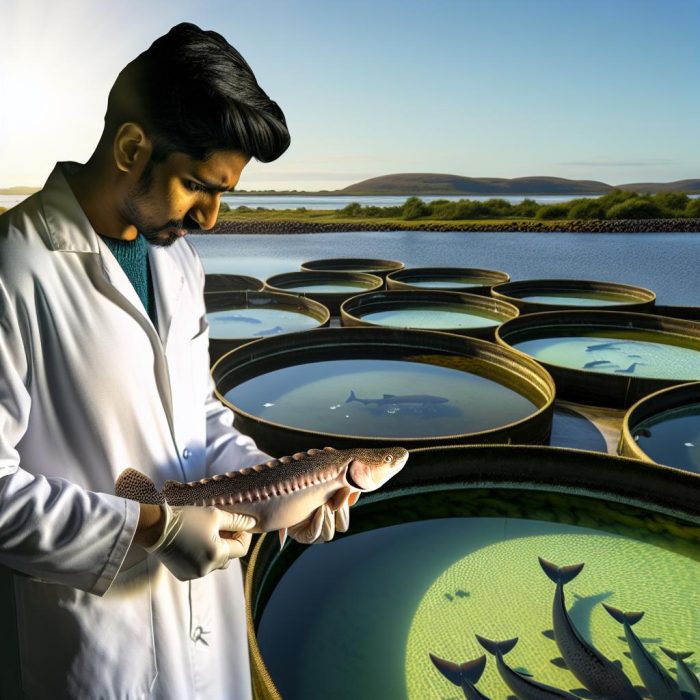Sustainable Caviar Production
The demand for caviar, a luxury delicacy, has been escalating over recent years, putting substantial pressure on natural sturgeon populations. These pressures have led to an increase in overfishing and illegal trading activities, consequently threatening the survival of these ancient fish. This growing concern has sparked interest in sustainable caviar production methods that aim to meet consumer demand while mitigating negative impacts on the environment. The emerging field of sustainable caviar production incorporates modern aquaculture techniques designed to safeguard wild sturgeon populations, offering a viable and environmentally friendly alternative for caviar connoisseurs.
The Importance of Sturgeon Conservation
Sturgeon are prehistoric species that have inhabited Earth for millions of years and are primarily located in the Black and Caspian Seas. Despite their long history, human activities have significantly influenced their decline, making them one of the most threatened species on the planet. Factors such as habitat destruction, pollution, and excessive fishing have dramatically reduced their numbers, with many sturgeon species currently classified as endangered. Conservation efforts are of paramount importance to prevent their extinction, and sustainable caviar farming emerges as a potential solution. By reducing the reliance on wild populations, sustainable farming can support the efforts to preserve these ancient creatures.
What is Sustainable Sturgeon Farming?
The concept of sustainable sturgeon farming involves raising these fish within controlled environments, typically through aquaculture systems. These farms attempt to replicate the natural habitat sturgeon are accustomed to, integrating effective breeding and harvesting strategies that prioritize ecological balance and species preservation. The overarching aim is to produce caviar of premium quality while significantly reducing the extraction pressures on wild sturgeon populations.
Key Practices in Sustainable Sturgeon Farming
Responsible Breeding: One of the cornerstones of sustainable sturgeon farming is responsible breeding. Farms meticulously select breeding pairs to maintain genetic biodiversity and to avoid inbreeding. This careful selection process is vital for ensuring the health and resilience of farmed sturgeon populations.
Eco-Friendly Environments: Sustainable farms are meticulously designed to monitor and maintain optimal water quality and environmental conditions. By closely managing these factors, farms create a nurturing setting that minimizes stress and potential disease outbreaks, translating into healthier fish populations.
Innovative Harvesting Techniques: Traditional caviar production is often lethal to sturgeon, but sustainable practices have introduced methods like non-lethal egg extraction. Such techniques allow sturgeon to spawn multiple times, ensuring productivity and reducing the need to capture more wild fish.
Benefits of Sustainable Caviar
The shift to sustainable caviar production offers several tangible benefits, both for the environment and for local economies. One of the most significant advantages is the reduction of fishing pressure on already vulnerable wild sturgeon populations, thus contributing to biodiversity conservation. Additionally, the adoption and expansion of sustainable farming practices present economic opportunities for communities through the establishment of responsible aquaculture industries. These industries can create jobs and stimulate local economies while ensuring environmental stewardship.
Challenges and Future Prospects
Implementing sustainable caviar production on a broader scale is not without its challenges. One primary hurdle is establishing robust regulatory frameworks and certifications to ensure farms are genuinely committed to ethical and sustainable practices. Such measures are crucial in guaranteeing consumer trust and maintaining industry standards. Moreover, raising awareness among consumers about the importance of choosing sustainable caviar is essential for driving market demand. Education efforts can help consumers make informed purchasing decisions that reflect their values regarding sustainability and environmental responsibility.
Looking ahead, the future of caviar production appears to be increasingly aligned with innovative and environmentally conscious practices. As consumers continue to prioritize sustainability, producers, businesses, and governments are encouraged to collaborate and promote these initiatives. Such partnerships are vital in ensuring the continuity of both the luxury of caviar and the preservation of sturgeon species for future generations to appreciate.
Finally, for those interested in learning more about sustainable aquaculture practices and certifications, engaging with organizations dedicated to sustainable seafood could provide valuable insights. For instance, certification bodies involved in promoting responsible seafood practices can offer resources that illuminate the path toward a sustainable future in caviar production and beyond. As these practices become more widespread and refined, they have the potential to set a precedent in the luxury food market, balancing indulgence with ecological conservation.

